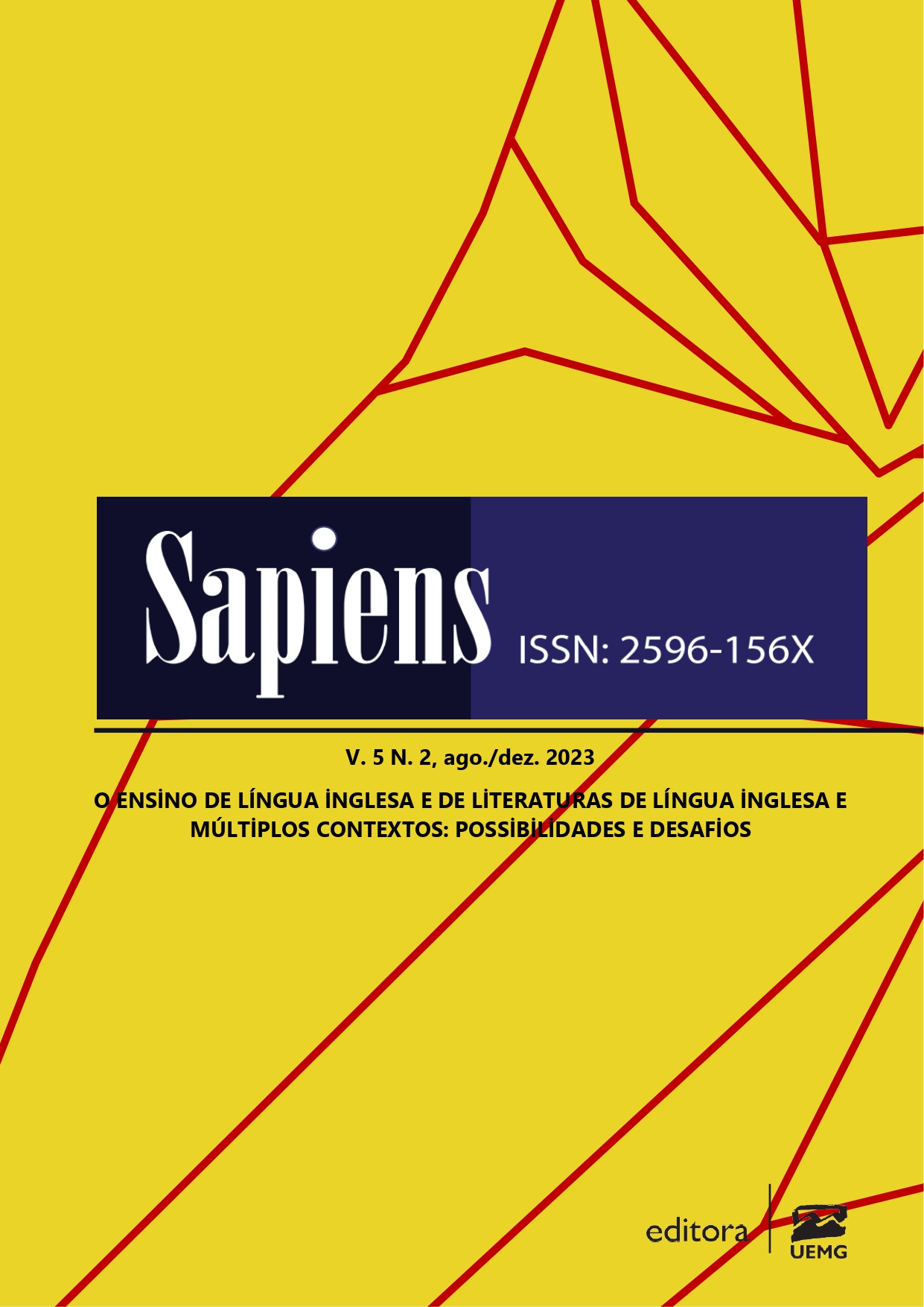Um modelo para se entender a evolução da resistência a inseticidas: a espécie bioinvasora Zaprionus indianus
Keywords:
bioinvasão, evolução de espécies invasoras, mosca-do-figo, resistênciaAbstract
The insecticide use as a strategy for pest management has increased exponentially in recent years, which can cause incalculable deleterious effects on human and environmental health. In addition, insecticides act as selective agents of resistant insects, which interferes with the population evolution of these organisms, in addition to potentiating the action of agricultural pests. The genetic mechanisms of resistance evolution include those related to detoxification and metabolization of these agents, as is the case of those related to esterase enzymes. These enzymes are part of several biological processes, which include those related to reproductive biology, nerve impulse transmission, and food digestion. The evolution of insecticide resistance mechanisms related to esterases has already been described for Zaprionus indianus, which was introduced in Brazil in the late 1990s and was an important pest of the fig culture and is still considered a species that offers risks to cultivars of various commercial fruits.
References
COMMAR, L.S.; GALEGO, L. G. C.; CERON, C. R.; CARARETO, C. M. A. Taxonomic and evolutionary analysis of Zaprionus indianus and its colonization of Palearctic and Neotropical regions. Genetics and Molecular Biology, v. 35, n. 2, p. 395–406, 2012. Disponível em: https://www.scielo.br/j/gmb/a/kh8Lv9NDqt3zWn69QmMCTsy/?format=pdf&lang=en, acesso em 14 de setembro de 2022.
FERREIRA, J. D.; COUTO, A. C.; POMBO-DE-OLIVEIRA, M. S.; KOIFMAN, S. In Utero Pesticide Exposure and Leukemia in Brazilian Children < 2 Years of Age. Environmental Health Perspectives, v.121, n.2, p. 269-75, 2013. Disponível em: https://ehp.niehs.nih.gov/doi/epdf/10.1289/ehp.1103942, acesso em 14 de setembro de 2022.
FREDIANELLI, A. C.; PIERIN, V. H.; UHLIG, S. C.; GALEB, L. A. G.; ROCHA, D. C. C.; RIBEIRO, D. R.; ANATER, A.; PIMPÃO, C. T. Hematologic, biochemical, genetic, and histological biomarkers for the evaluation of the toxic effects of fipronil for Rhamdia quelen. Turkish Journal od Veterinary & Animal Sciences, v. 43, p. 54-59, 2019. Disponível em: https://journals.tubitak.gov.tr/cgi/viewcontent.cgi?article=1375&context=veterinary, acesso em 14 de setembro de 2022.
GALEGO, L, G.; CARARETO, C. M. A. Variation at the Est3 locus and adaptability to organophosphorous compounds in Zaprionus indianus populations. Entomologia Experimentalis et Applicata, v. 13, p. 97–105, 2010. Disponível em: https://onlinelibrary.wiley.com/doi/epdf/10.1111/j.1570-7458.2009.00941.x, acesso em 14 de setembro de 2022.
GULLAN, P.J.; CRANSTON, P.S. Insetos: Fundamentos da Entomologia. São Paulo: Roca, 2017, 460p. 5. ed.
HEMINGWAY, J. The molecular basis of two contrasting metabolic mechanisms of insecticide resistance. Insect Biochemistry and Molecular Biology, v. 30, p. 1009–1015, 2000. Disponível em: https://www.sciencedirect.com/science/article/abs/pii/S0965174800000795?via%3Dihub, acesso em 14 de setembro de 2022.
KATO, C.M.; FOUREAUX, L. V.; CÉSAR, R. A.; TORRES, M. P. Ocorrência de Zaprionus indianus Gupta, 1970 (Diptera, Drosophilidae) no estado de Minas Gerais. Ciência e Agrotecnologia, v. 28, p. 454–455, 2004. Disponível em: https://www.scielo.br/j/cagro/a/GVzHPCR6C9qYvct5xCBPh4n/?lang=pt, acesso em 14 de setembro de 2022.
MACHADO, T.; SOLÉ-CAVA, A. M.; DAVID, J. R.; BITNER-MATHÊ, B. C. 2005. Allozyme variability in an invasive drosophilid, Zaprionus indianus (Diptera: Drsophilidae) comparison of a recently introduced Brazilian population with Old World populations. Annales de la Societé Entomologique de France, v. 41, p. 7–13, 2005. Disponível em: https://www.tandfonline.com/doi/pdf/10.1080/00379271.2005.10697438?needAccess=true, acesso em 14 de setembro de 2022.
MARINHO SILVA, R. C.; TORRE, P. A. D.; MATOS, J. C. O uso incorreto do inseticida fipronil e sua influência na morte das abelhas no sul do Brasil. Processando o Saber, v. 13, p. 93-110, 2021. Disponível em: https://fatecpg.edu.br/revista/index.php/ps/article/download/154/136/627, acesso em 14 de setembro de 2022.
MERHI, M.; RAYNAL, H.; CAHUZAC, E.; VINSON, F.; CRAVEDI, J.P.; GAMETPAYRASTRE, L. Occupational exposure to pesticides and risk of hematopoietic cancer: meta-analysis of case-control studies. Cancer Causes & Control , v.18, n.10, p.1209-26, dez. 2007. Disponível em: https://reduas.com.ar/wp-content/uploads/downloads/2011/07/c%C3%A1ncers-hematopoi%C3%A9ticos-y-pesticidas.pdf, acesso em 14 de setembro de 2022.
OAKESHOTT, J. G.; VAN PANPENRECHT, E. A.; CLAUDIANOS, C.; MORRISH, B. C.; COPPIN, C.; ODGERS, W.A. An episode of accelerated amino acid change in Drosophila esterase-6 associated with a change in physiological function. Genetica, v.110, p. 231–244, 2001. Disponível em: https://link.springer.com/content/pdf/10.1023/A:1012727814167.pdf, acesso em 14 de setembro de 2022.
PIEL, C.; POUCHIEU, C.; CARLES, C.; BÉZIAT, B.; BOULANGER, M.; BUREAU, M.; BUSSON, A.; GRÜBER, A.; LECLUSE, Y.; MIGAULT, L.; RENIER, M.; RONDEAU, V.; SCHWALL, X.; TUAL, S.; PIERRE, L.; BALDI, I. Agricultural exposures to carbamate herbicides and fungicides and central nervous system tumour incidence in the cohort AGRICAN. Environment International , v.130, p.104876, 2019. Disponível em: https://www.sciencedirect.com/science/article/pii/S0160412018331696, acesso em 14 de setembro de 2022.
PRESUTTI, R.; HARRIS, S. A.; KACHURI, L.; SPINELLI, J. J.; PAHWA, M.; BLAIR, A.; ZAHM, S. H.; CANTOR, K.P.; WEISENBURGER, D. D.; PAHWA, P.; McLAUGHLIN, J. R.; DOSMAN, J. A.; FREEMAN, L. B. Pesticide exposures and the risk of multiple myeloma in men: An analysis of the North American Pooled Project. International Journal of Cancer, v.139, n.8, p.1703-14, 2016. Disponível em: https://onlinelibrary.wiley.com/doi/10.1002/ijc.30218, acesso em 14 de setembro de 2022.
STEIN, C. P.; TEIXEIRA, E. P.; NOVO, J. P. S. Aspectos biológicos da mosca do figo, Zaprionus indianus Gupta, 1970 (Diptera: Drosophilidae). Entomotropica, v. 18, n. 3, p. 219–221, 2003. Disponível em: https://entomotropica.org/ver.php?id=92, acesso em 14 de setembro de 2022.
VILELA, C. R. Is Zaprionus indianus Gupta, 1970 (Diptera, Drosophilidae) currently colonizing the Neotropical region? Drosophila Information Service. v. 82, p. 37–39, 1999. Disponível em: https://www.researchgate.net/publication/325607541_Is_Zaprionus_indianus_Gupta_1970_Diptera_Drosophilidae_currently_colonizing_the_Neotropical_region, acesso em 14 de setemebro de 2022.



